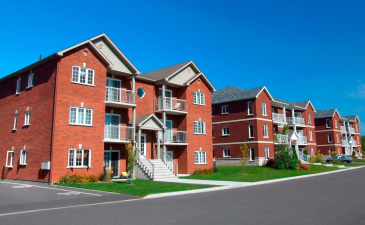1. Seniors: Aging with Dignity and Security
For older adults, affordable housing is a gateway to independent, fulfilling lives. Fixed pensions or social security often can’t keep up with rising rents, leaving many seniors vulnerable to homelessness or unsafe living conditions. Quality affordable housing designed for seniors addresses these challenges by:
l Prioritizing Accessibility: Features like grab bars, wide doorways, and elevators ensure safety and ease of movement, while on-site amenities like community centers or fitness rooms encourage social connection—a critical factor in senior well-being.
l Offering Supportive Services: Many communities partner with healthcare providers to offer wellness checks, meal programs, or transportation to medical appointments, reducing the stress of daily living. For seniors, this means aging in a place they can call home, surrounded by neighbors who become family.
l Providing Financial Stability: Predictable, income-based rents allow seniors to budget for healthcare, groceries, and hobbies, eliminating the anxiety of “rent or retirement savings?” decisions. As one resident, Martha, shares: “My affordable apartment lets me live independently without worrying about losing everything to housing costs. I even have enough to visit my grandkids!”
2. Low-Income Families: Building a Foundation for the Future
For families living paycheck to paycheck, affordable housing is the first step toward breaking the cycle of poverty. Stable housing creates a ripple effect of positive change:
l Education for Children: Proximity to good schools and safe neighborhoods means kids can focus on learning without the trauma of frequent moves. Studies show children in stable housing perform better academically and have lower stress levels.
l Health and Well-Being: Affordable homes often come with features like energy-efficient appliances, clean air systems, and access to green spaces—factors that directly impact physical and mental health. No parent should have to choose between a safe home and their child’s medical needs.
l Economic Empowerment: When housing costs drop below 30% of income (the federal affordability standard), families can save for emergencies, pursue higher education, or start small businesses. Affordable housing isn’t charity; it’s an investment in upward mobility.
3. The Role of Communities and Policy: Building Together
Affordable housing thrives when governments, nonprofits, and private developers collaborate. Key initiatives include:
l HUD Programs: Section 8 vouchers and Low-Income Housing Tax Credits (LIHTC) enable developers to build and maintain affordable units, ensuring supply keeps pace with demand.
l Nonprofit Champions: Organizations like Habitat for Humanity or local housing coalitions work tirelessly to renovate neglected properties or advocate for tenant rights, proving housing is a human right, not a privilege.
l Inclusive Design: Modern affordable communities prioritize mixed-income living, creating diverse neighborhoods where seniors and families interact, share resources, and build social capital. A senior might mentor a child with homework; a family might help an elder with grocery shopping—these connections strengthen the fabric of society.
4. Debunking Myths: Affordable Housing is Good for Everyone
Despite its proven benefits, affordable housing often faces misconceptions. Let’s set the record straight:
l Myth: “Affordable housing lowers property values.”Fact: Well-managed communities boost neighborhood stability, attract local businesses, and reduce strain on social services.
l Myth: “Only those who can’t work need affordable housing.”Fact: 70% of affordable housing residents are working families, seniors, or people with disabilities—hardworking individuals who simply earn less than the area’s median income.
l Myth: “Affordable housing lacks quality.”Fact: Top developers prioritize safety, sustainability, and modern amenities, ensuring residents enjoy spaces that feel like home, not temporary shelters.
5. Stories of Hope: Real Lives Transformed
The impact of affordable housing is best told through those who call it home:
l Carlos, a single father in Arizona: “After years of couch-surfing with my daughter, we found an affordable apartment with a playground and after-school programs. Now she has her own room, and I have peace of mind knowing she’s safe.”
l Mrs. Gonzalez, a retired nurse in Florida: “My senior community isn’t just affordable—it’s a village. We cook together, celebrate holidays, and even have a garden club. At 75, I’ve never felt more alive.”
l These stories remind us: affordable housing isn’t a policy issue; it’s a human issue. It’s about dignity, opportunity, and the belief that every person deserves a place to belong.
How You Can Help: Take Action Today
Whether you’re a policymaker, a neighbor, or someone who cares about justice, here’s how you can make a difference:
l Advocate for Policy Change: Support initiatives that expand affordable housing funding and protect tenant rights.
l Volunteer or Donate: Partner with local organizations to build homes, mentor residents, or donate household items.
l Spread the Word: Share stories of affordable housing’s impact to combat stigma and build empathy.
Together, we can redefine what “home” means—for seniors seeking comfort in their golden years, for families dreaming of a better future, and for a nation that values dignity for all.
Affordable housing is more than a solution; it’s a promise. A promise that no one should have to choose between housing and hope.




